





Amebiasis
General information about a disease
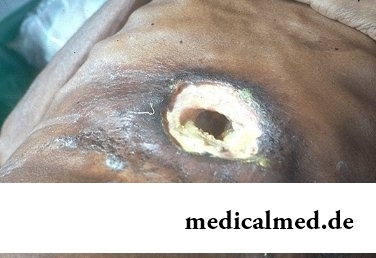
The amebiasis (amoebic dysentery, amoebic colitis) is an infectious disease which main display is damage of a large intestine and development of abscesses in some other bodies (most often in a liver). The disease is caused by pathogenic strains of Entamoeba histolytica. They are widespread in the countries with tropical and subtropical climate that is natural, considering the low level of sanitation in these regions. However, today the intestinal amebiasis is an important medical and social problem and for Russia as increase in number of the infected patients leads to growth of lethal outcomes, especially among children.
To understand everything gravity of a situation is enough to be known that carriers of an infection are about 480 million people. Every tenth diseased with an intestinal amebiasis suffers from abenteric abscesses and colitis, and in 4% of cases such patients die because of the wrong diagnosis and untimely medical care. Let's notice also that the intestines amebiasis intensively extends among the population of the developed countries under the influence of migration, foreign tourism and deterioration in an economic situation.
Classification of an amebiasis and symptoms of a disease
The amebiasis activator – a dysenteric or gistolitichesky amoeba of Entamoeba histolityca. She lives in a large intestine of the person, is capable to cause necroses, emergence of ulcers, to get into mucous and submucosal covers. Depending on type of the activator and its localization in an organism, doctors allocate an intestinal and abenteric amebiasis.
One of the most common clinical forms of an intestinal amebiasis is dysenteric colitis. It has acute and chronic character with an incubation interval from 1 week to 3-4 months. Main symptoms of an amebiasis of this form:
- the speeded-up chair (to 4-6 times a day);
- bloody or mucous inclusions in fecal masses;
- fervescence (at late stages);
- pulling or colicy pains in the lower part of a stomach;
- painful tenesmus.
If at the person the started amebiasis develops, symptoms of an infection are followed by symptoms of intoxication, a loss of appetite, nausea, vomiting. At an acute current the stomach of the patient becomes soft, the acute pain at a palpation of a large intestine is felt. After 4-6 weeks symptoms of an amebiasis fade, there occurs remission which can last both 1-2 weeks, and several months. If not to take a measure for treatment of a disease – the chronic amebiasis of intestines which treatment is complicated because of emergence all of the new and new centers of an infection develops.
The chronic amebiasis proceeds in the form of continuous or recurrent forms. In either case at patients are observed:
- exhaustion because of lack of appetite;
- decrease in working capacity;
- development of an asthenic syndrome;
- increase in the sizes of a liver;
- vitamin and proteinaceous and power deficiency;
- unpleasant taste in a mouth;
- pallor of integuments;
- mild and average pains in ileal area;
- the expressed symptoms of cardiovascular pathology (tachycardia, priglushennost of cardiac sounds, lability of pulse).
In the absence of treatment, the infection of an amebiasis leads to perforation of walls of a large intestine, bleedings, appendicitis, development of purulent peritonitis, gangrene. The fastest operation as, otherwise, the amebiasis leads to death in 100% of the registered cases is necessary for such patients.
The abenteric form of an amebiasis results from hematogenous or direct entering of strains from guts. At the diagnosis the chronic intestinal amebiasis, symptoms most often demonstrate damage of a liver. This process is followed:
- increase in the sizes of body;
- high temperature (up to 39 degrees);
- formation of abscesses;
- stethalgias;
- fever, fever;
- availability of pus and blood in a phlegm.
In recent years many cases when the amebiasis influenced not only a liver, but also other vitals are recorded: urinogenital and respiratory system, integuments, heart. Respectively, at the first adverse symptoms you should see a doctor and to undergo comprehensive examination.
Amebiasis – treatment of a disease
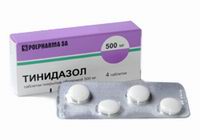 All drugs used in the course of treatment of an intestinal amebiasis are subdivided into two groups – contact and system fabric amoebocides. The first are applied in the presence of a noninvasive amebiasis and at final stages of treatment to elimination of the remained amoebas. Besides, contact (prosvetny) amoebocides are demanded when it is necessary to take preventive measures for prevention of spread of an infection. Treat drugs of this group: этофамид, паромомицин, клефамид, diloxanide. At the diagnosis the invasive amebiasis, treatment assumes reception of system fabric amoebocides – metronidazole, a seknidazol, Tinidazolum. At severe forms of an amebiasis antibacterial drugs, active in relation to intestinal microflora are recommended.
All drugs used in the course of treatment of an intestinal amebiasis are subdivided into two groups – contact and system fabric amoebocides. The first are applied in the presence of a noninvasive amebiasis and at final stages of treatment to elimination of the remained amoebas. Besides, contact (prosvetny) amoebocides are demanded when it is necessary to take preventive measures for prevention of spread of an infection. Treat drugs of this group: этофамид, паромомицин, клефамид, diloxanide. At the diagnosis the invasive amebiasis, treatment assumes reception of system fabric amoebocides – metronidazole, a seknidazol, Tinidazolum. At severe forms of an amebiasis antibacterial drugs, active in relation to intestinal microflora are recommended.
The developed abscesses (more than 6 cm) need aspiration (transdermal drainage). This procedure is necessary for prevention of a rupture of abscess and also when the chemotherapy of a gut does not result in the expected results. Corticosteroids an amebiasis – are contraindicated to patients with the diagnosis as they are followed by numerous complications.
In general, on condition of early diagnosis and adequate medicamentous therapy, the intestines amebiasis completely recovers within several months after an initiation of treatment.
Most of women is capable to derive more pleasure from contemplation of the beautiful body in a mirror, than from sex. So, women, you aim at symmetry.

Each person supports all life a SARS about 200 times. The peak of incidence falls on cold season, but to get sick from temperatures...
Section: Articles about health
One of the useful properties presented to the person by the nature is ability to feel fear. This ability is designed to signal about approach of a dangerous situation and to help to avoid in advance it to keep life. However if the fear is persuasive and not about...
Section: Articles about health
Coffee - the tonic loved by many for the invigorating aroma and deep taste. Having the stimulating effect, coffee increases working capacity, promotes concentration of attention, fights against drowsiness and improves mood. Statistically, about 30% of inhabitants of the planet regularly use coffee, from them more than 8% are "coffee-achievers" - the persons using more than 3 cups of drink a day....
Section: Articles about health
Each person has easy indispositions which he transfers "standing", trying not to ask for medical care. Argu...
Section: Articles about health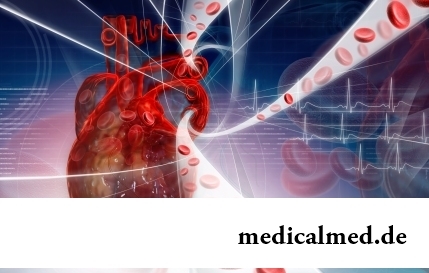
The state of health of the person in many respects depends on chemical composition of biological liquids of an organism. Specialists consider that PH value of these solutions has to be in range of 7,35-7, 45. A deviation in the smaller party (so-called "acidulation") to a chra...
Section: Articles about health
The metabolism at each person proceeds in own way. However between the speed of this process and disposal of excess weight after all all have a dependence. Unfortunately, the people inclined to try on itself numerous "miracle" diets, not always consider this circumstance and with the most resolute intentions begin to eat so that artificially slow down the metabolism instead of to accelerate it. Except quite clear disappointment, incorrectly picked up systems...
Section: Articles about health
At this plant there are a lot of names: tuberiferous sunflower, Jerusalem artichoke, solar root, earth pear. Contrary to spread...
Section: Articles about health
Life of the modern woman is very difficult. Opportunities to realize itself are wide: it not only education and career, but also the most various hobbies from sport before needlework. It is not less important to build private life, paying an attention maximum to children, the husband, parents, e...
Section: Articles about health
Cold, puffiness of a nose, itch, the watering eyes - characteristic symptoms of the allergic rhinitis resulting from hit of allergens (pollen, house dust, hair of animals, etc.) on a mucous membrane of a nose. Unpleasant feelings often give trouble, serving as the reason of a headache, an acrimony, sleep disorders, and in certain cases and the states close to a depression. How to get rid of undesirable satellites of a disease if near at hand there are no antiallergic...
Section: Articles about health
80% of women at least once to lives complained of discomfortable feelings to breasts, consolidations and nagrubaniye. These are mastopathy symptoms. Mas...
Section: Articles about health
The drugs stopping or oppressing life activity of pathogenic microorganisms are widely applied in clinical practice from 40th years of the last century. Originally antibiotics were called only substances natural (animal, vegetable or микробног...
Section: Articles about health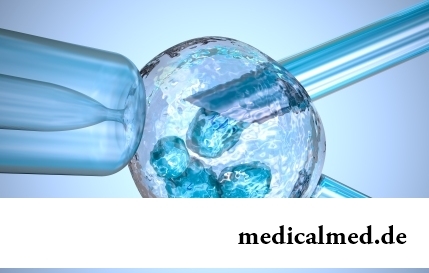
EKO, or extracorporal fertilization - a method of treatment of infertility which became the reason of a set of broken-down copies in due time accused the people working on its creation neither more nor less of rivalry good luck. Already very few people deny the right of a method for existence, and to surprise nobody with "children from a test tube". And nevertheless, a certain magic in the procedure of artificial fertilization is, process of origin of new life is always a secret, and even it р now...
Section: Articles about health
Dark circles (bruises) under eyes – a shortcoming with most of which often fight against the help of cosmetics (proofreaders, salons...
Section: Articles about health
The way of life of people promptly changes from year to year: if about ten years ago the personal computer was not in each family, then today already very few people do without this device. Certainly, and children master the computer at full speed: they not only I play...
Section: Articles about health
Sooner or later hair turn gray at all. Many people try to hide these changes, returning natural color of the hair by means of coloring, or considerably changing it for the purpose of creation of absolutely new image. All know that the gray hair is a sign of the coming old age, so, it is necessary to get rid of it....
Section: Articles about health
Frosty air, fresh wind and easy snowball at most of Russians are associated with cheerfulness, health and cheerful entertainments, on to...
Section: Articles about health
Subfebrile temperature call fervescence to 38 degrees, and subfebrile condition - existence of such temperature over 3 days, and quite often it happens without the visible reasons. Existence of subfebrile condition - a strong indication of disturbances in an organism which can...
Section: Articles about health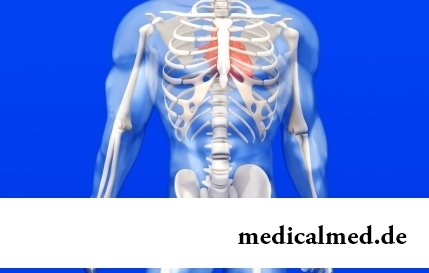
For many women the word "fat" sounds as a sentence. In aspiration to an ideal figure they try to exclude, first of all, from the menu all dishes containing fats without having at the same time a clear idea of a role of these substances in exchange processes, and of effects for health with which food restrictions of this sort are fraught. For what the human body needs fats and as their deficit in a diet is shown, we also will try to find out....
Section: Articles about health
Household skills which to us so diligently imparted in the childhood it appears, not always bring only benefit. According to result...
Section: Articles about health
Bees – really unique beings. Practically all products of their life activity are used by the person. Since the most ancient times medicinal properties of honey and other substances received in the course of beekeeping are known. The fact that all these пр is especially significant...
Section: Articles about health
Summer in the heat. Many are going to spend vacation abroad. Travelers the tender seas, rest on beaches wait, for sightseeing, campaigns on natural and cultural reserves. But, unfortunately, on vacation also problems with health can wait for us. On a foreign trip it is possible to face also diseases which not only will spoil long-awaited issue, but also will force to be treated within long months after its termination. To be insured completely from troubles of it a sort...
Section: Articles about health
The summer of this year in Russia was very ambiguous. Regions suffered from a merciless heat, from pouring rains, from times...
Section: Articles about health
It seems, quite recently you brought the baby from maternity hospital, but time flew by, and here it is already going to join the first in life children's collective. How to prepare the child for visit of a garden? What needs to teach him to facilitate process адап...
Section: Articles about health
The stroke is one of the most widespread diseases of the person, annually in the world about 6 million cases of this pathology are registered. According to medical statistics, strokes occur almost three times more often than myocardial infarctions. The disease belongs to heavy, and has an unfavourable result: the lethality reaches 40% among women and 25% among men. A considerable part of the patients who endured a stroke cannot be recovered completely. We suggest readers to examine...
Section: Articles about health
Work of a brain is extremely complex and in many respects is not studied yet. It is confirmed also by the features of thought processes which are shown in...
Section: Articles about health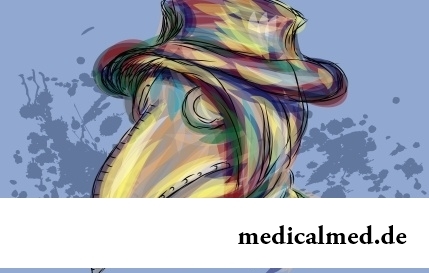
History of mankind contains several tens of epidemics whose emergence was compared by eyewitnesses and historians to doomsday. The most terrible of them claimed the lives of millions of people, having made even the whole people to the person of the earth. What they − the diseases striking terror? Daringly...
Section: Articles about health
Iodine - one of thirty most important microelements in our organism. The main role of iodine consists in synthesis of thyroid hormones of a thyroid gland - the substances which are responsible for the majority of exchange processes of an organism. It is known that thyroid hormones consist of iodine more than for 65%. The lack of iodine leads to decrease in production of hormones and, as a result, development of a hypothyroidism. The long condition of deficit can become a source of problems of the cardiovascular, bone, digestive SI...
Section: Articles about health
